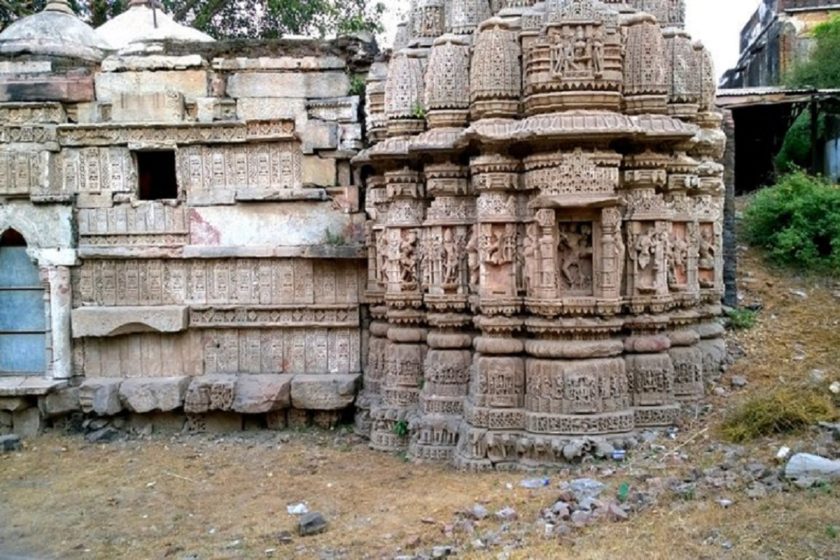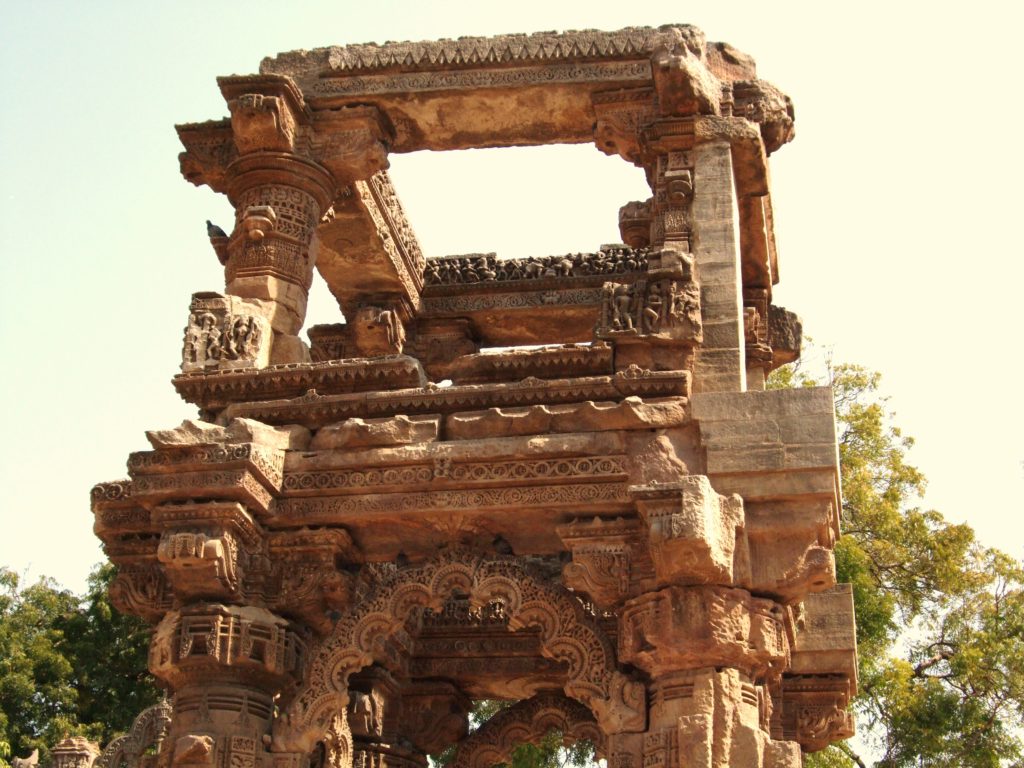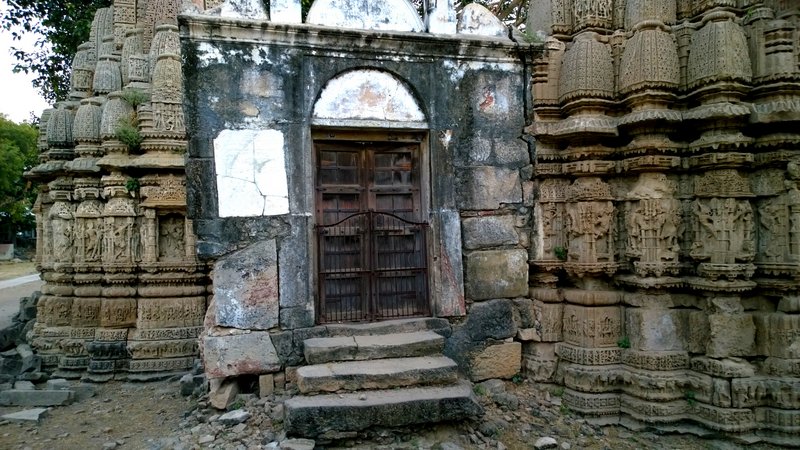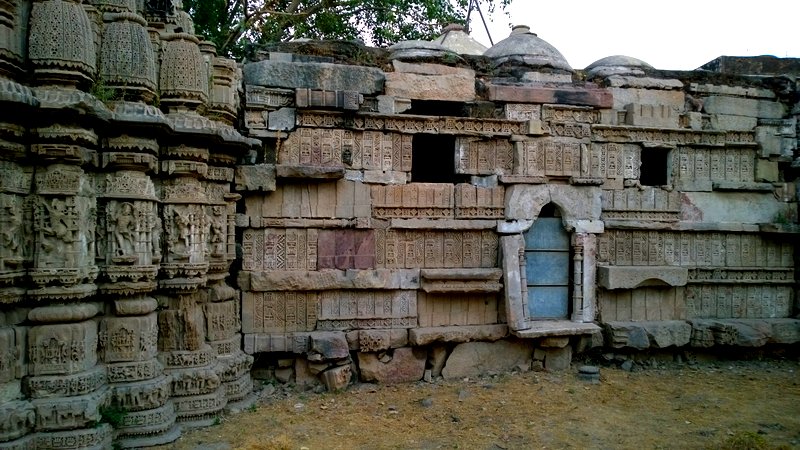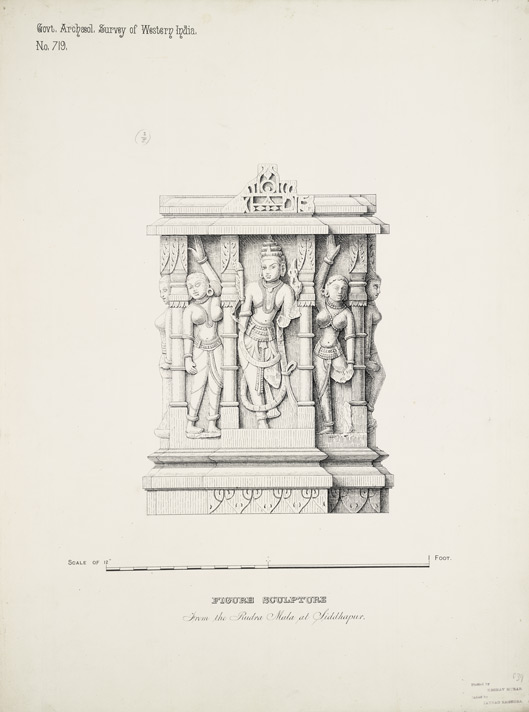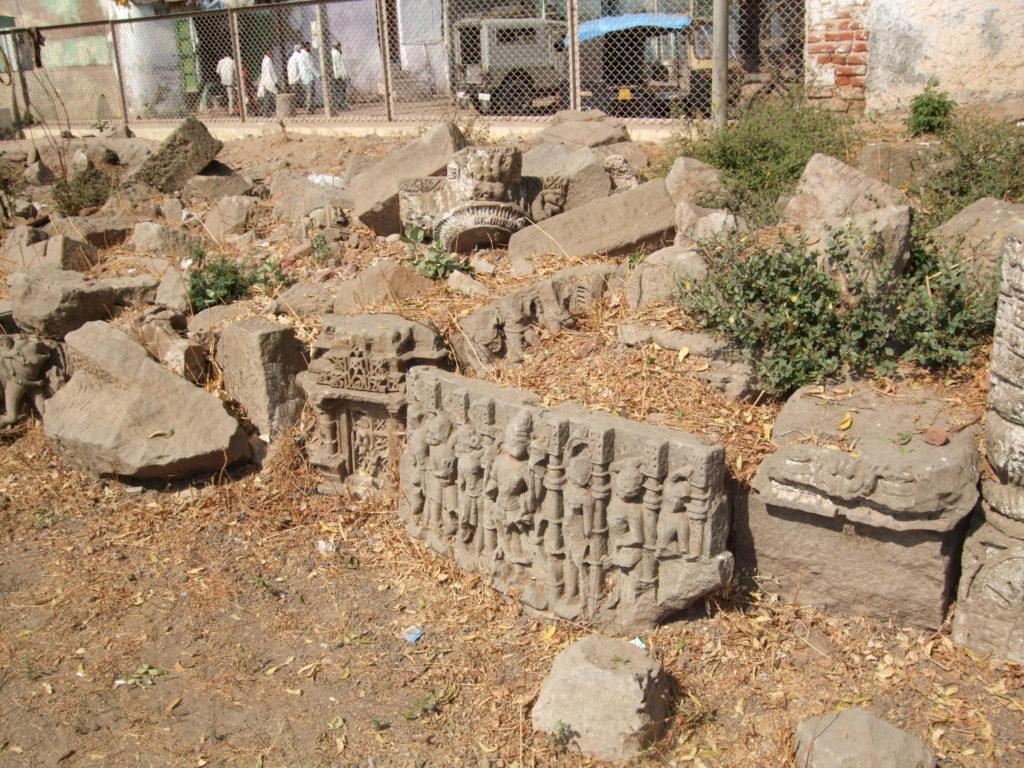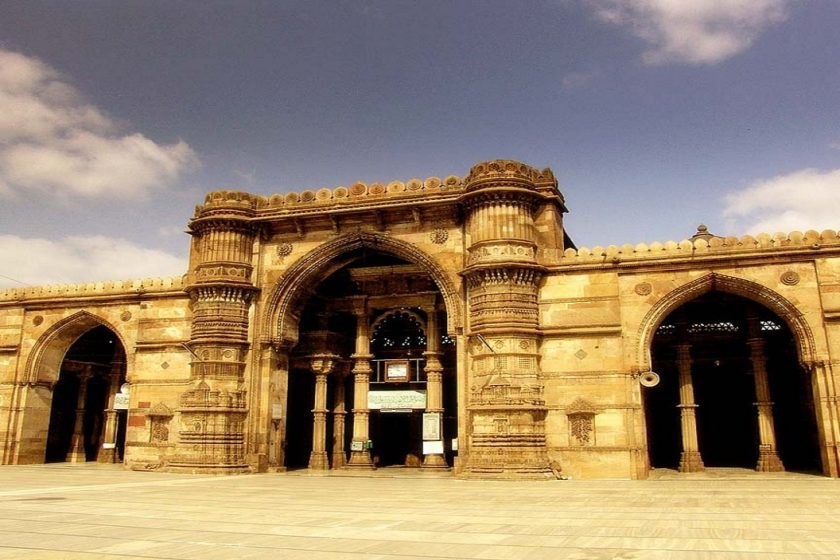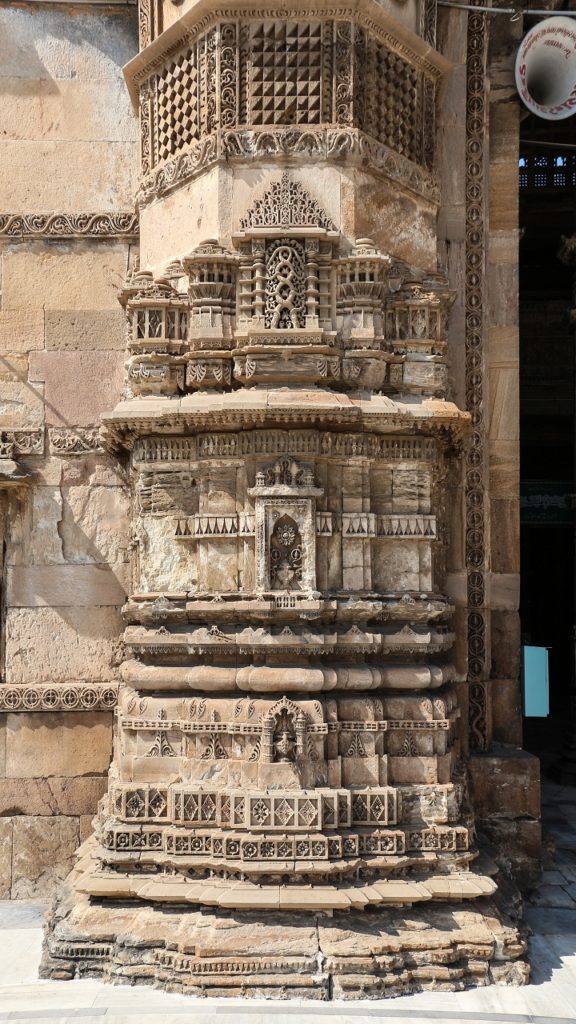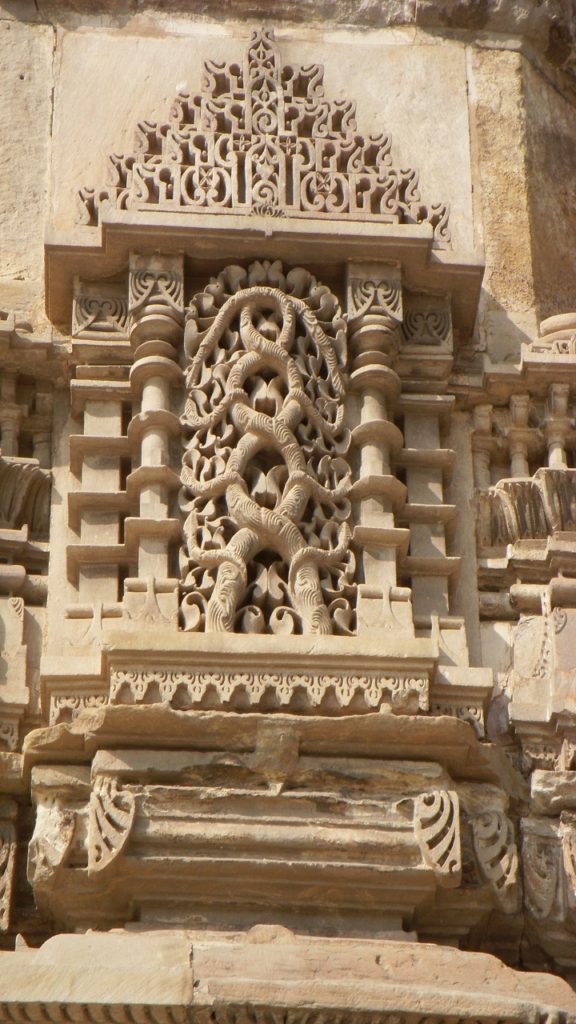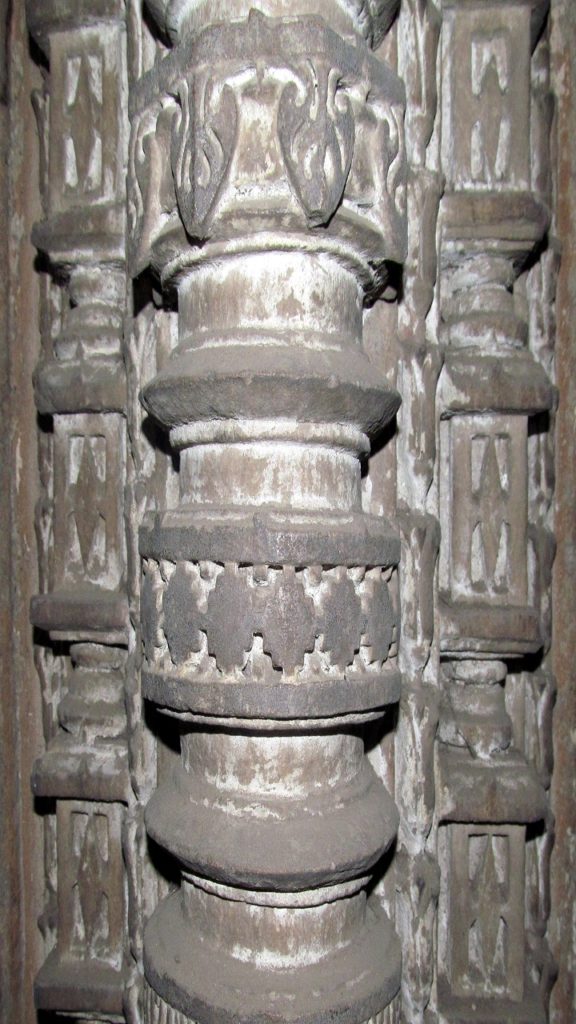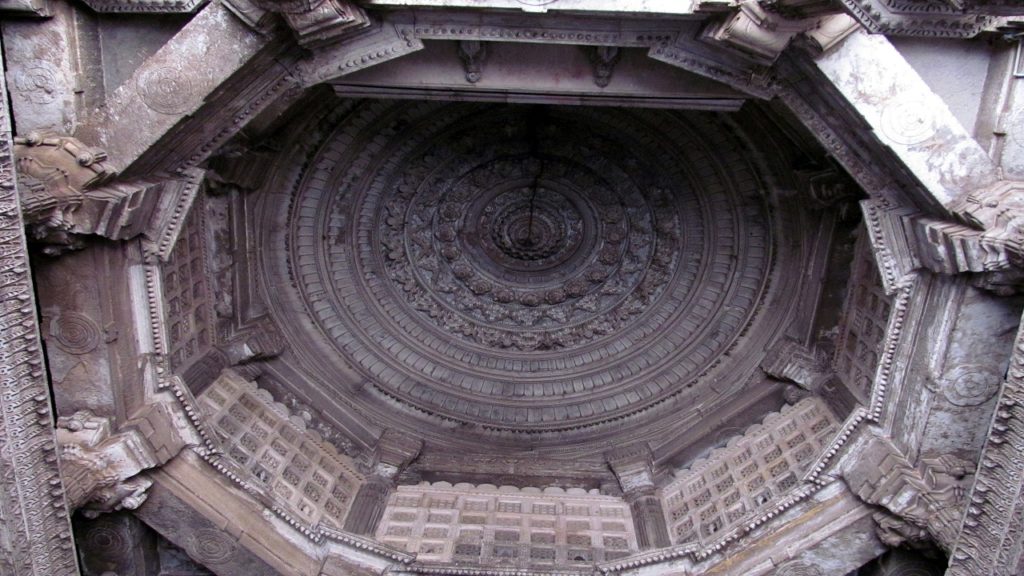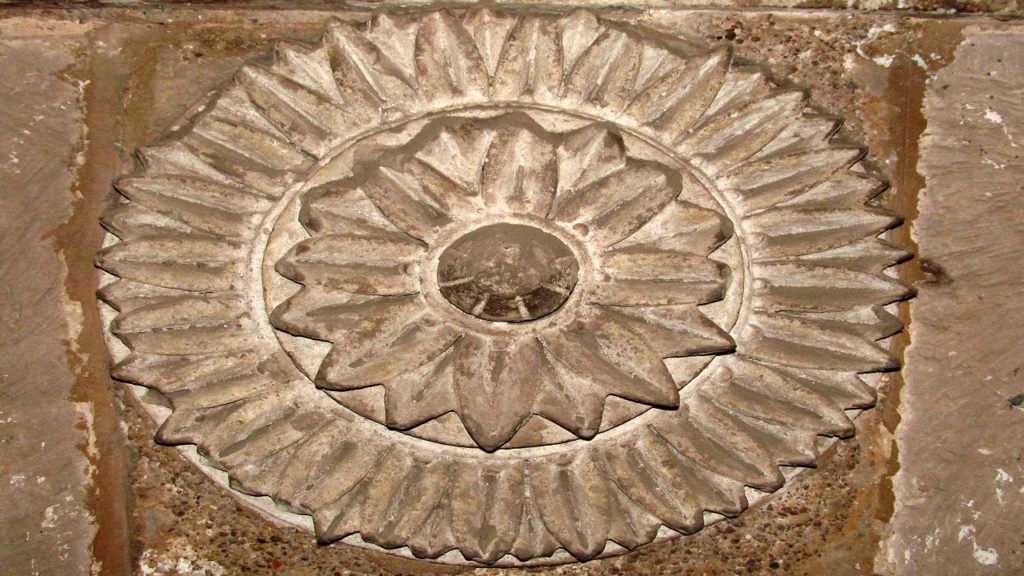Gujarat
List of Masjids in Gujarat which was built by destroying Hindu temples
LIST OF MOSQUES IN GUJARAT WHICH WERE BUILT AFTER DEMOLISHING THE HINDU TEMPLES
We give below, state-wise and district-wise, the particulars of Muslim monuments which stand on the sites and/or have been built with the materials of Hindu temples, and which we wish to recall as witnesses to the role of Islam as a religion and the character of Muslim rule in medieval India. The list is the result of a preliminary survey. Many more Muslim monuments await examination. Local traditions which have so far been ignored or neglected have to be tapped on a large scale.
We have tried our best to be exact in respect of locations, names and dates of the monuments mentioned. Even so, some mistakes and confusions may have remained. It is not unoften that different sources provide different dates and names for the same monument. Many Muslim saints are known by several names, which create confusion in identifying their mazars or dargahs. Some districts have been renamed or newly, created and a place which was earlier under one district may have been included in another. We shall be grateful to readers who point out these mistakes so that they can be corrected in our major study. This is only a brief summary.
Sita Ram Goel
It should be kept in mind that the list below doesn’t include all the temples destroyed by Muslims and converted to mosques. The below is the list of mosques and Dargahs where evidences exists of having been made after destroying the temples at these locations. In many mosques, Muslim rulers were able to eradicate all signs of temples, and hence not given in below list.
Anyone are free to visit the below list of mosques and see the remnants and materials of Hindu temples used in their construction. Archaeological Survey of India should conduct an excavation of below mosques to find out more about the ancient temples in these locations and possible mass graves around the mosque sites.
I. AHMADABAD DISTRICT
Ahmadabad
Materials of temples destroyed at Asaval, Patan and Chandravati were used in the building of this Muslim city and its monuments. Some of the monuments are listed below:
1. Palace and Citadel of Bhadra.
2. Ahmad Shah-ki-Masjid in Bhadra.
3. Jami Masjid of Ahmad Shah.
4. Haibat Khan-ki-Masjid.
5. Rani Rupmati-ki-Masjid.
6. Rani Bai Harir-ki-Masjid.
7. Malik Sarang-ki-Masjid.
8. Mahfuz Khan-ki-Masjid.
9. Sayyid Alam-ki-Masjid.
10. Pattharwali or Qutb Shah-ki-Masjid.
11. Sakar Khan-ki-Masjid.
12. Baba Lulu-ki-Masjid.
13. Shykh Hasan Muhammad Chishti-ki-Masjid.
14. Masjid at Isanpur.
15. Masjid and Mazar of Malik Shaban.
16. Masjid and Mazar of Rani Sipri (Sabarai).
17. Masjid and Mazar of Shah Alam at Vatva.
18. Maqbara of Sultan Ahmad Shah I.
Dekwara
19. Masjid (1387). Temple site.
Dholka
20. Masjid and Mazar of Bahlol Khan Ghazi. Temple site.
21. Mazar of Barkat Shahid (1318). Temple site.
22. Tanka or Jami Masjid (1316). Temple materials used.
23. Hillal Khan Qazi-ki-Masjid (1333). Temple materials used.
24. Khirni Masjid (1377). Converted Bavan Jinalaya Temple.
25. Kali Bazar Masjid (1364). Temple site.
Isapur
26. Masjid. Temple site.
Mandal
27. Sayyid-ki-Masjid (1462). Temple site.
28. Jami Masjid. Temple site.
Paldi
29. Patthar-ki-Masjid. Temple site.
Ranpur
30. Jami Masjid (1524-25). Temple site.
Sarkhej
31. Dargah of Shykh Ahmad Khattu Ganj Baksh (d. 1445). Temple materials used.
32. Maqbara of Sultan Mahmud Begada. Temple materials used.
Usmanpur
33. Masjid and Mazar of Sayyid Usman. Temple site.
II. BANASKANTHA DISTRICT
Haldvar
34. Mazar of Lun Shah and Gujar Shah. Temple site.
Halol
35. Ek Minar-ki-Masjid. Temple site.
36. Panch Munhda-ki-Masjid. Temple site.
37. Jami Masjid (1523-24). Temple site.
Malan
38. Jami Masjid (1462). Temple materials used.
III. BARODA DISTRICT
Baroda
39. Jami Masjid (1504-05) Temple site.
40. Dargah of Pir Amir Tahir with its Ghazi Masjid. Temple site.
41. Mazar of Pir Ghoda (1421-23). Temple site.
Dabhoi
42. Dargah of Panch Bibi. Temple materials used.
43. Mazar of Mai Dhokri. Temple materials used.
44. Fort. Temple materials used.
45. Hira, Baroda, Mabuda and Nandodi Gates. Temple materials used.
46. Mahundi Masjid. Temple materials used.
Danteshwar
47. Mazar of Qutbudd-Din. Temple site.
Sankheda
48. Masjid (1515-16). Temple site.
IV. BHARUCH DISTRICT
Amod
49. Jami Masjid. Temple materials used.
Bharuch
50. Jami Masjid (1321). Brahmanical and Jain temple materials used.
51. Ghaznavi Masjid (1326). Temple site.
52. Idgah (1326). Temple site.
53. Chunawada Masjid (1458). Temple site.
54. Qazi-ki-Masjid (1609). Temple site.
55. Mazar of Makhdum Sharifud-Din (1418). Temple site.
Jambusar
56. Jami Masjid (1508-09). Temple site.
Tankaria
57. Badi or Jami Masjid (1453). Temple site.
V. BHAVNAGAR DISTRICT
Botad
58. Mazar of Pir Hamir Khan. Temple site.
Tolaja
59. Idgah and Dargah of Hasan Pir. Temple site.
Ghoda
60. Masjid (1614). Temple site.
VI. JAMNAGAR DISTRICT
Amran
61. Dargah of Dawal Shah. Temple materials used.
Bet Dwarka
62. Dargah of Pir Kirmani. Temple site.
Dwarka
63. Masjid (1473). Temple site.
VII. JUNAGARH DISTRICT
Junagarh
64. Borwad Masjid (1470). Temple site.
65. Jami Masjid in Uparkot. Jain Temple site.
66. Masjid at Mai Gadhechi. Converted Jain temple.
Loliyana
67. Dargah of Madar Shah. Temple site.
Kutiana
68. Jami Masjid. Temple site.
Mangrol
69. Rahmat Masjid. Temple materials used.
70. Jami Masjid (1382-83). Temple materials used.
71. JunI Jail-ki-Masjid (1385-86). Temple site.
72. Revali Masjid (1386-87). Temple materials used.
73. Masjid at Bandar. Temple materials used.
74. Dargah near Revali Masjid. Temple materials used.
75. Mazar of Sayyid Sikandar alias Makhdum Jahaniya (1375). Temple materials used.
76. Gadhi Gate. Temple materials used.
Somnath Patan
77. Bazar Masjid (1436). Temple site.
78. Chandni Masjid (1456). Temple site.
79. Qazi-ki-Masjid (1539). Temple site.
80. Pathanwadi Masjid (1326). Temple site.
81. Muhammad Jamadar-ki-Masjid (1420). Temple site.
82. Mithashah Bhang-ki-Masjid (1428). Temple site.
83. Jami Masjid. Temple materials used.
84. Masjid made out of the Somanatha Temple of Kumarapala.
85. Masjid at the back of the Somanatha Temple. Converted temple.
86. Mota Darwaza. Temple materials used.
87. Maipuri Masjid on the way to Veraval. Temple materials used.
88. Dargah of Mangluri Shah near Maipuri Masjid. Temple materials used.
89. Shahid Mahmud-ki-Masjid (1694). Temple site.
Vanasthali
90. Jami Masjid. Converted Vamana Temple.
Veraval
91. Jami Masjid (1332). Temple site.
92. Nagina Masjid (1488). Temple site.
93. Chowk Masjid. Temple site.
94. Mandvi Masjid. Temple site.
95. Mazar of Sayyid Ishaq or Maghribi Shah. Temple site.
96. Dargah of Muhammad bin Haji Gilani. Temple site.
VIII. KACHCHH DISTRICT
Bhadreshwar
97. Solakhambi Masjid. Jain Temple materials used.
98. Chhoti Masjid. Jain Temple materials used.
99. Dargah of Pir Lal Shahbaz. Jain Temple materials used.
Bhuj
100. Jami Masjid. Temple site.
101. Gumbad of Baba Guru. Temple site.
Munra or Mundra
A Seaport built from the materials of Jain temples of Bhadreshwar which were
demolished by the Muslims
102. Safed Masjid which can be seen from afar was built from the same materials.
IX. KHEDA DISTRICT
Kapadwani
103. Jami Masjid (1370-71). Temple site.
104. Sam Shahid-ki-Masjid (1423). Temple site.
Khambhat
105. Jami Masjid (1325). Jain Temple materials used.
106. Masjid in Qaziwara (1326). Temple site.
107. Masjid in Undipet (1385). Temple site.
108. Sadi-i-Awwal Masjid (1423). Temple site.
109. Fujra-ki-Masjid (1427). Temple site.
110. Mazar of Umar bin Ahmad Kazruni. Jain Temple materials used.
111. Mazar of Qabil Shah. Temple site.
112. Mazar of Shykh Ali Jaulaqi known as Parwaz Shah (1498). Temple site.
113. Mazar of Shah Bahlol Shahid. Temple site.
114. Maqbara of Ikhtiyarud-Daula (1316). Temple site.
115. Idgah (1381-82). Temple site.
Mahuda
116. Jami Masjid (1318). Temple site.
Sojali
117. Sayyid Mubarak-ki-Masjid. Temple site.
X. MEHSANA DISTRICT
Kadi
118. Masjid (1384). Temple site.
119. Masjid (1583). Temple site.
Kheralu
120. Jami Masjid (1409-10). Temple site.
Modhera
121. Rayadi Masjid. Temple site.
Munjpur
122. Jami Masjid (1401-02). Temple site.
Patan
123. Jami Masjid (1357). Temple materials used.
124. Phuti Mahalla or Pinjar Kot-ki-Masjid (1417). Temple site.
125. Bazar-ki-Masjid (1490). Temple site.
126. Masjid in a field that was the Sahasralinga Talav. Temple materials used.
127. Masjid and Dargah of Makhdum Husamud-Din Chishti, disciple of Shykh izamud-Din Awliya ofDelhi. Temple materials used.
128. Gumda Masjid (1542). Temple site.
129. Rangrezon-ki-Masjid (1410-11). Temple site.
130. Dargah of Shykh Muhammad Turk Kashgari (1444-45). Temple site.
131. Dargah of Shykh Farid. Converted temple.
Sami
132. Jami Masjid (1404). Temple site.
Sidhpur
133. Jami Masjid. Built on the site and with the materials of the Rudra-mahalaya Temple of Siddharaja Jayasimha.
Una
134. Dargah of Hazrat Shah Pir. Temple site.
Vijapur
135. Kalan Masjid (1369-70). Temple site.
136. Mansuri Masjid. Temple site.
XI. PANCH MAHALS DISTRICT
Champaner
137. Jami Masjid (1524). Temple site.
138. Bhadra of Mahmud Begda. Temple site.
139. Shahr-ki-Masjid. Temple site.
Godhra
140. Masjid. Temple site.
Pavagadh
141. Masjid built on top of the Devi Temple.
142. Panch Munhda Masjid. Temple site.
143. Jami Masjid. Temple site,
Rayania
144. Masjid (1499-1500). Temple site.
XII. RAJKOT DISTRICT
Jasdan
145. Dargah of Kalu Pir. Temple materials used.
Khakhrechi
146. Jami Masjid. Temple site.
147. Dargah of Kamal Shah Pir. Temple site.
Mahuva
148. Idgah (1418). Temple site.
Malia
149. Jami Masjid. Temple site.
Morvi
150. Masjid (1553). Temple site.
Santrampur
151. Masjid (1499-1500). Temple site.
XIII. SABARKANTHA DISTRICT
Hersel
152. Masjid (1405). Temple site.
Himmatnagar
153. Moti-Mohlat Masjid in Nani Vorwad (1471). Temple site.
Prantij
154. Fath or Tekrewali Masjid (1382). Temple site.
155. Dargah of Sikandar Shah Shahid (d. 1418). Temple materials used.
XIV. SURAT DISTRICT
Navasari
156. Jami Masjid (1340). Temple site.
157. Shahi Masjid. Temple site.
Rander
The Jains who predominated in this town were expelled by Muslims and all temples of the former were converted into mosques. The following mosques stand on the site of and/or are constructed with materials from those temples:
158. Jami Masjid.
159. Nit Nauri Masjid.
160. Mian-ki-Masjid.
161. Kharwa Masjid.
162. Munshi-ki-Masjid.
Surat
163. Mirza Sami-ki-Masjid (1336). Temple site.
164. Nau Sayyid Sahib-ki-Masjid and the nine Mazars on Gopi Talav in honour of nine Ghazis. Temple sites.
165. Fort built in the reign of Farrukh Siyar. Temple materials used.
166. Gopi Talav (1718). Temple materials used.
Tadkeshwar
167. Jami Masjid (1513-14). Temple site.
XV. SURENDRANAGAR DISTRICT
Sara
168. Darbargadh-ki-Masjid (1523). Temple site.
Vad Nagar
169. Masjid (1694). Stands on the site of the Hatakevara Mahadeva temple.
Wadhwan
170. Jami Masjid (1439). Temple site.
EVIDENCE IS AVAILABLE THAT IN GUJARAT THE ABOVE MENTIONED MOSQUES AND DARGAHS WERE CONSTRUCTED BY DESTROYING HINDU TEMPLES. BUT IN MANY OTHER CASES MUSLIMS SUCCEEDED IN REMOVING ALL TRACES OF TEMPLES FROM THE MOSQUES. IN SUCH CASES ONLY AN EXCAVATION BY ASI WILL REVEAL THE DESTROYED TEMPLES.
WHILE MUSLIMS ASK FOR REBUILDING THE ILLEGAL MOSQUE IN AYODHYA, WHY SHOULD NOT HINDUS DEMAND THE RECONSTRUCTION OF THE DESTROYED TEMPLES IN INDIA?


